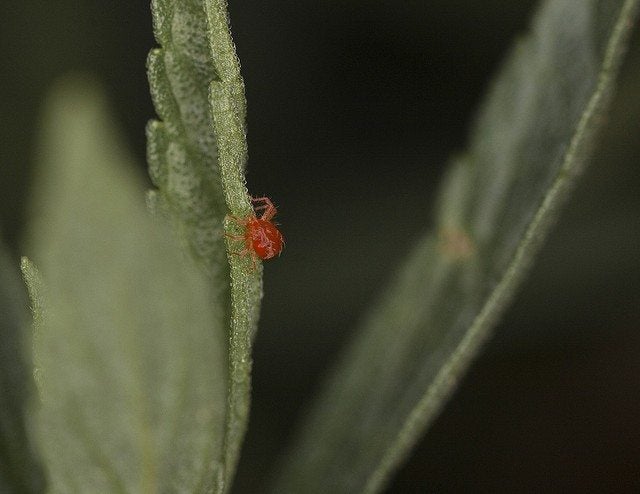Types Of Mites In Garden: Common Mites That Affect Plants


If you are seeing signs of curled, yellow leaves, tiny webs, or just sickly plants, you might have a nearly invisible foe. Mites are hard to see with the naked eye, but their presence can be monitored by sticky cards or even just shaking the plant over a piece of white paper. Those tiny black or red specks are a sucking insect that can do a lot of damage to the health of trees, edibles, ornamentals, and even some herbs. There are many types of mites, each of which has preferred plant hosts. Learn the signs of plant mites and how to deal with them.
Types of Mites
Mites may be found on landscape, ornamental, or houseplants. These versatile little insects not only reduce plant vigor but can also transmit some dangerous viruses and diseases. Plant mites feed by piercing plant cells and feeding on the moisture inside. This activity leaves necrotic or yellowing spots. Speckling on foliage is a classic sign of mite activity. One of the easier to recognize mite varieties are the spider mites. These insects produce fine webbing that lightly nets leaf tips and stems. Spider mites attack a wide range of plants from indoor to outdoor specimens. There are also plant specific mites such as spruce mites or honey locust spider mites. They range from a fraction of a centimeter to a tiny percentage of an inch in size and come in a host of colors.
About Plant Mites
Mites are actually arachnids and more closely related to spiders. They have eight legs and a two-segmented body. Mites on garden plants are difficult to diagnose due to their tiny size. Mites on houseplants may be easier to spot, as these are usually spider mites. Indoor mites also have a more pronounced effect as the lifecycle of the arachnid is not interrupted by cold weather. Mites in garden settings will overwinter as eggs or adults in leaf debris, bark crevasses, or even on stems. Mites are prolific breeders and populations can reach a damaging level very quickly. Pest management is crucial to preventing widespread contamination in the garden or on all your houseplants.
Mite Control
Dry, hot conditions enhance mite activity. Keep weeds away from ornamental plants and remove infested species out of the home or greenhouse to prevent spreading the mites. Mites in garden plants can be treated with a broad spray of miticide. It is best to try to identify your pest mite, as there are beneficial predatory mites that will eat the damaging arachnids. If you use a broad-spectrum insecticide, you risk an outbreak of bad mites since you killed the good mites. Rinse off mites on houseplants. This significantly reduces the population if done frequently. Horticultural oil spray or neem oil work quickly on mites in both garden and indoor settings. They are non-toxic and easy to use.
Sign up for the Gardening Know How newsletter today and receive a free copy of our e-book "How to Grow Delicious Tomatoes".

Bonnie Grant is a professional landscaper with a Certification in Urban Gardening. She has been gardening and writing for 15 years. A former professional chef, she has a passion for edible landscaping.